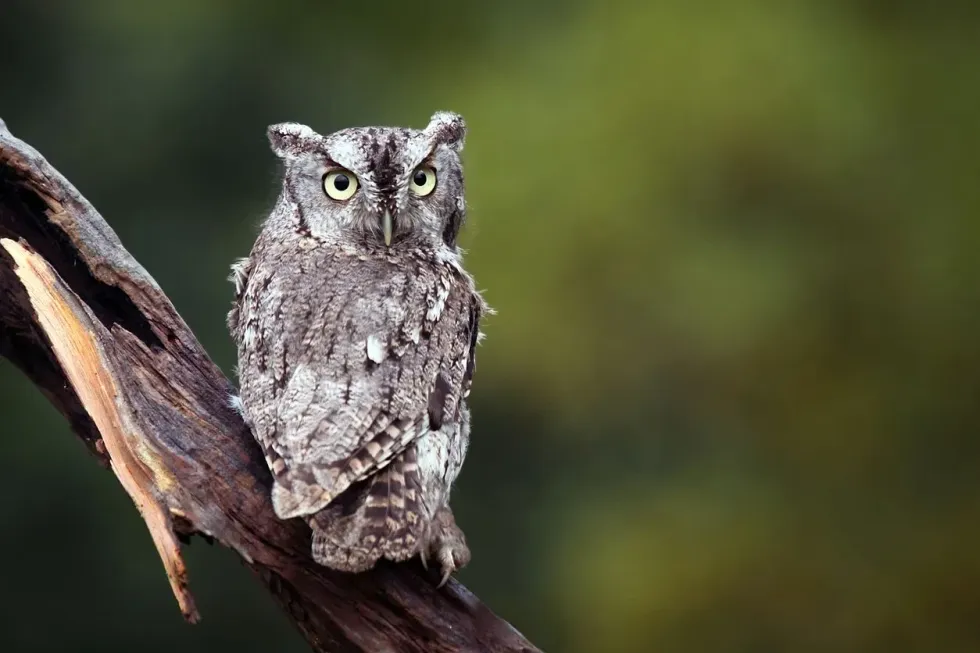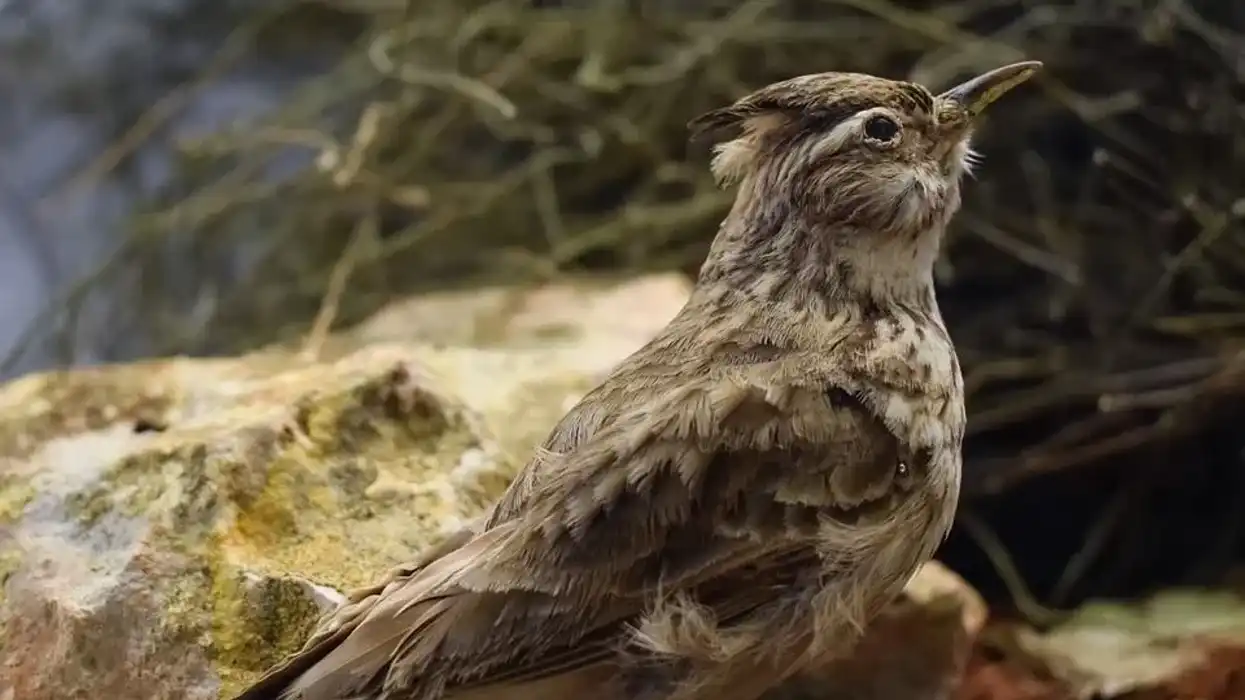The Eastern screech owl is a nocturnal bird that can be spotted within the home range in the East of North America. Even though owls are tagged as screech owls they do not screech.
Instead, they generate an even tone trill, called tremolo, which is very common during the mating season at night.
The Eastern screech owl is closely related to the Western screech owl, however, there are distinct characteristics that distinguish the Eastern screech owl from the Western screech owl like the shade variations of the bill.
The Easter screech owls are North American birds and are widely available, the Eastern subspecies are branched into five subspecies based on their distribution across the American continent. Typically solitary, they reside in cavities of trees or man-made habitats near the residential area.
Keep reading this article for more information and check out these articles on the Northern spotted owl and burrowing owl too!
Eastern Screech Owl Interesting Facts
What type of animal is an Eastern screech owl?
The Eastern screech owl is a species of owl, largely discovered in the eastern part of North America, known for their even pithed voice also called tremolo which can be heard at night particularly during the spring mating season.
What class of animal does an Eastern screech owl belong to?
These North American owls belong to the class of Aves, family Strigidae and order Strigiformes, the Eastern screech owl (megascops asio) has five subspecies.
How many Eastern screech owls are there in the world?
Eastern screech owls can be observed within home ranges as they are superabundantly distributed in their respective areas, but the exact number of this species of owl present in the world is not summarized.
Where does an Eastern screech owl live?
As their name suggests, the Eastern screech owl is North American bird found in the eastern region including East Montana, The Great lakes, Tamaulipas, Northeast Mexico, Ontario, Florida.
The range of their distribution of the species depends on its subspecies, the M. a. asio resides in eastern Minnesota, southwestern regions of Quebec, south of New Hampshire, Missouri, Tennessee, and South Carolina.
The M.a. maxwelliae can be observed in west kansas, south of Manitoba, central Montana, and the southeastern part of Saskatchewan. The M.a.
hasbroucki inhabits the areas of Oklahoma, south of Kansas, southern Edwards Plateau of central Texas. The M.a. mccallii inhabits the territories of the northwest part of Chihuahua, south of Texas, and north of Coahuila.
The last subspecies on the list is M.a. floridanus whose range extends from Florida and south Georgia till western Louisiana and southeast of Arkansas.
What is an Eastern screech owl's habitat?
The Eastern screech owl (megascops asio) chooses to live in areas that have adequate trees particularly the open deciduous forests with pine trees, suburban terrain, mixed woodlands; they live in the tree cavities and nest boxes which is one of their ideal nesting sites.
This bird is extremely adaptable hence, the choice of their habitat is more flexible than the rest of the birds as it can effortlessly adjust with the urban lifestyle.
However, the population of these owls is sparse in the rocky mountains and boreal forest due to the other species of owls like the Boreal owls and other variation of screech owls.
The eastern screeching owls can be frequently seen roosting or living in manmade habitats like boxcars and water tanks other than nest boxes, living near humans makes foraging manageable.
Who do the Eastern screech owls live with?
Eastern screech owls are primarily solitary birds except for the mating season when they search for partners.
How long does an Eastern screech owl live?
The average lifespan of the Eastern Screech owls in captivity is assumed to be more than 20 years. However, in the wild, they have major predators including blue jays, Virginia opossums, skunks, snakes, birds of prey which has an impact on their mortality rate.
How do they reproduce?
The breeding season of the Eastern screech owls ranges from April till May and has a prolonged process of courtship which involves mating called and various gestures, the method of reproduction is sexual.
The nests are located in tree cavities, nest boxes, or manmade nesting sites, as they do not construct a nest, the females lay eggs in the pre-made nest cavities, the eggs are laid after two days and the incubation phase which is approximately 26 days begins after laying the first eggs.
Most of the brooding and incubation is performed by females, nevertheless, males do not abandon them and assist them with occasional brooding and arranging food for the female and hatchlings.
The pair have the habit of returning to the same nest after one year.
What is their conservation status?
The conservation status of this species of owl is Least Concern by the IUCN as it is largely distributed, but the population has an impact on habitat loss and the presence of predators.
Eastern Screech Owl Fun Facts
What do Eastern screech owls look like?
The Eastern screech owl (megascops asio) of order Strigiformes have five distinct subspecies; however, the size of all the varieties are more or less the same which is somewhere between 5-7 in (13-18 cm) and a body weight of 0.2-0.5 lb (0.09-0.2 kg).
The M. a. asio’s dorsal color is gray but over 39% of the population has a red morph and their toes are thickly covered in feathers.
The M. a. maxwelliae is named after Martha Maxwell, the American naturalist as an honor, the maxwelliae the is pale compared to the M.a Asio and the red morphs are also rare and pale, the M. a. hasbroucki has a more buffy gray appearance with coarse and thick spots, red morphs are equally rare as in the M.a.
maxwelliae.
In the M. a. mccallii, red morphs are relatively absent particularly in south texas, but the markings are thick which makes them appear heavily spotted.
The M. a. floridanus, on the other hand, has red dorsal color and the red morph is extremely common it may also have a brown morph and it is the smallest variety of the Eastern screech owl species.
The eyes of these birds are yellow, and the ear tufts are small and prominent, the bill is a significant feature as it distinguishes them from the Western screech owls, the bill is greenish olive and underneath their bill, there are greying brown whiskers.

How cute are they?
The young owls are undoubtedly the cutest to look at, but adult owls appear equally adorable because of their small stout stature, small head, ears, and yellow eyes.
How do they communicate?
The Eastern screech owl produces an even pitched trill to communicate with each other, but it is primarily a solitary bird but they search for their mate during the breeding season.
How big is an Eastern screech owl?
Eastern screech owls are small birds, with small bodies and ear tufts. They have a body length of 5-7 in (13-18 cm) which makes them slightly smaller than the white throat and long tufted owls.
How fast can an Eastern screech owl fly?
Eastern screech owls can fly fast with almost five strokes of wings per second, one can spot them flying even near the residential areas but they are absent in certain areas like the rocky mountains because of the presence of other bid species.
How much does an Eastern screech owl weigh?
The weight of this little grey owl is around 0.2-0.5 lb (0.09-0.2 kg).
What are their male and female names of the species?
The male and female names of all species of birds are considered as cock and hen, hence males are called owl coco and the females are called owl hens.
Both males and females help to nurture the young owl, the male collects its prey and bring it to the female and the female break down the prey with her beak and feed the owlets.
What would you call a baby Eastern screech owl?
Baby owls are called owlets, and they evolve from eggs after being laid in the nest boxes or tree cavities. Males and females both take part in the incubation and brooding phase. Young owls are extremely competitive and may kill the smallest of the clutch for food.
What do they eat?
The feeding habits of this bird can be described as opportunistic hunters, however, they prey on insects, invertebrates. The diet of a bird consists of grasshoppers, crickets, moths, beetles, and cicadas which are largely accessible within the range of their habitats.
Their diet also comprises mammals including small rabbits and a variety of including rodents like squirrels, rats, and mice. Invertebrates like earthworms, leeches, and centipedes also play a crucial role in their diet.
Are they dangerous?
They can be aggressive during brooding and nurturing the young ones and can probably attack humans and other animals on the head of the passerby with their beaks.
Would they make a good pet?
If private individuals wish to keep a native owl as a pet, they need a proper license according to the laws of the United States.
Did you know...
The female Eastern screech owl is bigger than the males, but the voice of males is deeper than the females and the pair is commonly monogamous.
What sound does a screech owl make at night?
The sound made by the Eastern screech owls is called tremolo which is an even tone trill, helps them to communicate with each other during the night as they are nocturnal birds.
Why do screech owls screech at night?
The screeching of owl is a method of communication, the voices cab be largely heard during their April to May which is their mating season.
Here at Kidadl, we have carefully created lots of interesting family-friendly animal facts for everyone to discover! For more relatable content, check out these myna facts and hooded oriole facts pages.
You can even occupy yourself at home by coloring in one of our free printable eastern screech owl coloring pages.










